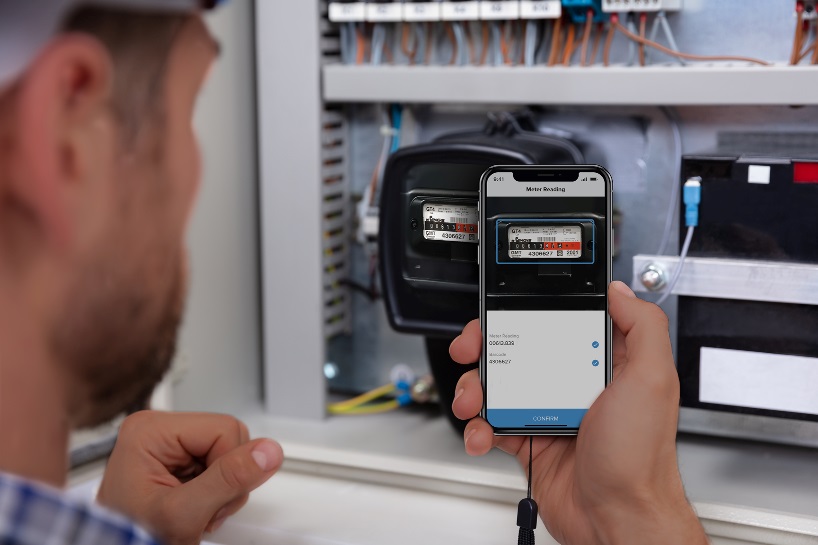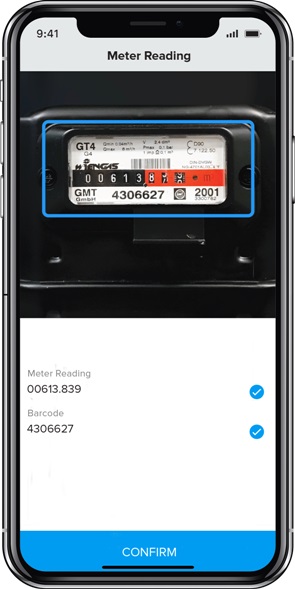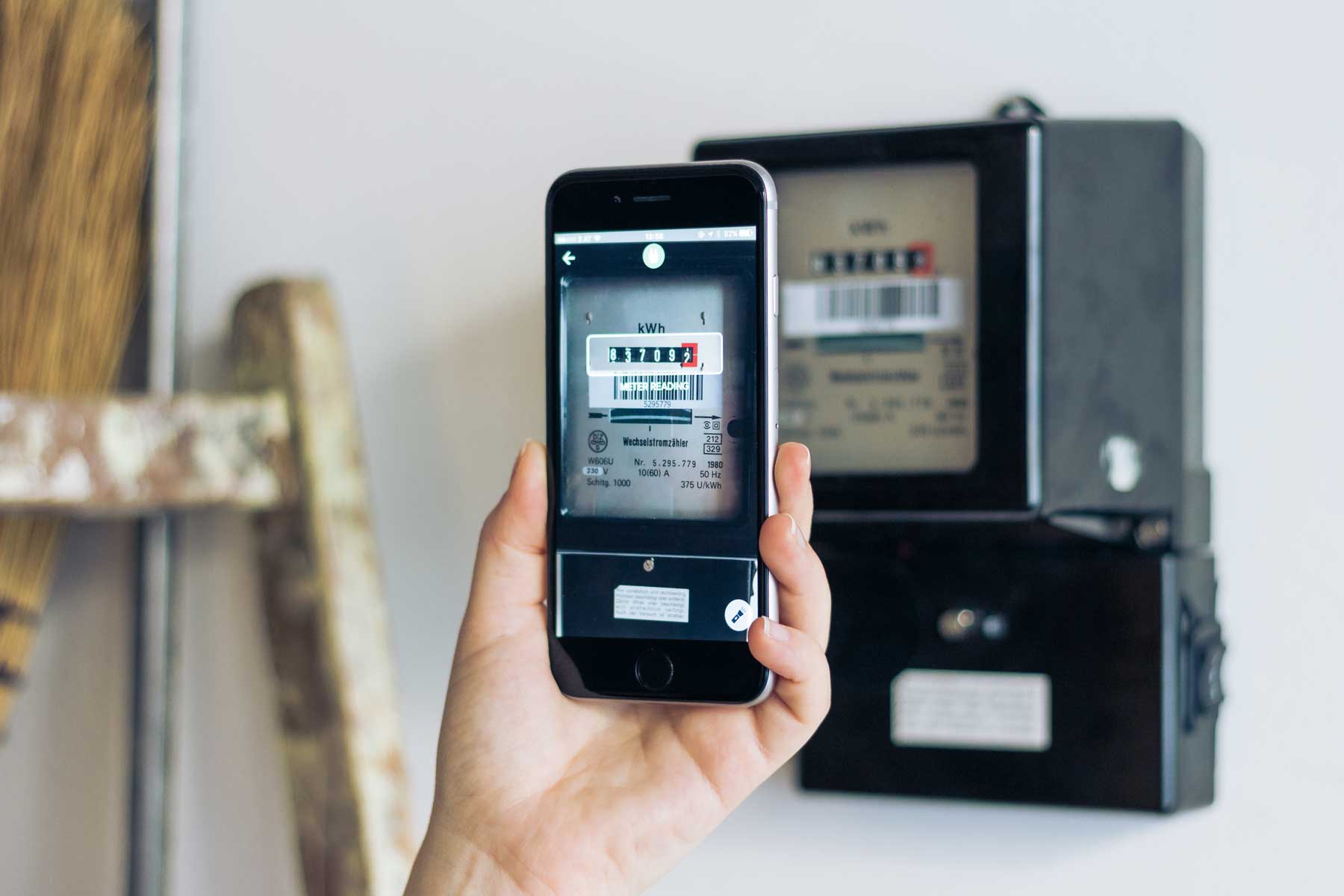 In August this year, Tata Power Delhi Distribution Ltd announced a partnership with Austria-based Anyline to introduce forensic energy meter reading in the utility’s command area spanning 510 sqkm housing nearly 2 million meters. T&D India got in touch with Ebin Thomas, Regional Sales (S.A.E) APAC, Middle East and North Africa, Anyline, to understand the intricacies of OCR-based metering reading and how Anyline’s solutions can help utilities make meter reading more efficient, thereby lowering their non-technical losses. Ebin Thomas, whilst giving keen insights into Anyline’s solutions, also expresses confidence of many more such partnership opportunities in India. An interview by Venugopal Pillai.
In August this year, Tata Power Delhi Distribution Ltd announced a partnership with Austria-based Anyline to introduce forensic energy meter reading in the utility’s command area spanning 510 sqkm housing nearly 2 million meters. T&D India got in touch with Ebin Thomas, Regional Sales (S.A.E) APAC, Middle East and North Africa, Anyline, to understand the intricacies of OCR-based metering reading and how Anyline’s solutions can help utilities make meter reading more efficient, thereby lowering their non-technical losses. Ebin Thomas, whilst giving keen insights into Anyline’s solutions, also expresses confidence of many more such partnership opportunities in India. An interview by Venugopal Pillai.
Let us start by understanding a fundamental issue: What is OCR scanning and what are the typical deployment areas?
Optical Character Recognition (OCR) defines the process of mechanically or electronically converting scanned images of handwritten, typed, or printed text into machine-encoded text. It is basically turning analog data, digital. OCR scanning finds its place whenever people or businesses need to capture large amounts of data: it’s faster to scan a serial number or the display of a utility meter than manually reading and typing text strings into a system, and OCR scanning eliminates most if not any mistake in data entry processes.
We understand Anyline supplies “Anyline SDK” that adds OCR scanning capabilities to a mobile app or website. Please tell us more.
 Anyline develops and provides AI-based OCR scanning capabilities that allows data capture for utility meters, tire sidewalls, barcodes, serial numbers, license plates, identification documents (national ID/drivers license/passport) and more. Rather than a mobile application, Anyline supplies its SDK (software development kit) to its customers, which enables them to integrate any of our scanning capabilities into their existing system.
Anyline develops and provides AI-based OCR scanning capabilities that allows data capture for utility meters, tire sidewalls, barcodes, serial numbers, license plates, identification documents (national ID/drivers license/passport) and more. Rather than a mobile application, Anyline supplies its SDK (software development kit) to its customers, which enables them to integrate any of our scanning capabilities into their existing system.
As an example of this, utility providers can integrate Anyline meter scanning capability into their own workforce app – making the capability available and usable by workers for data capture processes.
What sets Anyline apart from other OCR scanning solutions is that it takes in account the challenges that are non-technical losses (NTL) in Asian markets like India where NTLs represent around $14 billion annually. When it comes to reducing NTLs, mobile meter reading can play a key role:
- Corruption and bribes can make technicians change the value of a meter in their report, and falsify proofs of the reading. Mobile meter reading makes it impossible as the value is no more entered by hand but scanned directly from the meter.
- Mobile meter reading makes it easier to identify that the right meter has been read, as it can be authenticated by a barcode or serial number scan from the side of the meter.
- Anyline’s industry-first utility forensics technology also makes it harder to falsify data or proofs, as alerts will be sent if anything out of the ordinary is detected.
- Finally, utility companies can have further information about meter readings, with an automatic link made between the data captured and the time and place the reading was made. This is known as geolocalisation.
Are there any compatibility issues that need to be taken care of with respect to the operating system of the mobile phone?
Anyline scanning capabilities work with any digital device equipped with a camera, like smartphones, tablets, but also ruggedized or industry-specific devices. It runs on iOS, Android and UWP for mobile usage.
On the integration side, Anyline is trying to always support the development frameworks (Flutter, Xamarin, Cordova, React-Native) that developers and integrators are using and loving, to make sure the integration of our scanning capabilities is simple, easy and quick.
In addition to being easy to integrate to existing systems (or to new ones), Anyline’s scanning solution also has the advantage of working in harsh conditions (low light, rain, etc) and without internet connection; that makes it a bit more “real life compatible” as well.
Which industries do you currently serve?
 Anyline mainly focuses on the utility and energy industry (meter reading) as well as the tyre and automotive industry (tyre sidewall scanning and vehicle scanning). However, thanks to the many different capabilities we provide, companies across many industries (mostly logistics, retail, police, government, banking and more) trust Anyline’s scanning solution for their data capture processes.
Anyline mainly focuses on the utility and energy industry (meter reading) as well as the tyre and automotive industry (tyre sidewall scanning and vehicle scanning). However, thanks to the many different capabilities we provide, companies across many industries (mostly logistics, retail, police, government, banking and more) trust Anyline’s scanning solution for their data capture processes.
We are also working with companies across these industries from Europe, Asia, North & South America, Africa and the Middle East.
Due to our presence in Europe, as well as our relationships with police forces and governments, we are making sure that our scanning solution respects the GDPR rules regarding data privacy, and we are also ISO27001 certified for the security of our solution.
Which industries, yet untapped, can be useful deployment areas for Anyline SDK?
Right now, we are working exclusively with the utility and energy sectors in India, but we are looking for future opportunities in the other industries Anyline is focusing on, like the automotive aftermarket or policing.
In the context of energy meter reading, please discuss in detail how Anyline SDK can improve the overall efficiency of the process?
Using a tablet or a smartphone, workers hold their camera up to the meter and the AI-driven OCR scanner reads the images in the video stream, turning the meter reading into actionable data. When the meter is scanned, the field worker can instantly send them to the utility company’s operations platform for billing.
The technology-driven process eliminates the possibility of human error, as it can also scan meter serial numbers or be bundled with barcode scanning to ensure the right meter is being read.
Can you elaborate on how Anyline’s solutions could tangibly benefit power utilities?
Anyline’s OCR meter reading solution brings an array of benefits to utility operations:
- Accuracy: OCR scanning provides users with industry-leading precision, meaning that it’s virtually impossible for workers or customers to make an error.
- Time saving: The technology scans about 20 times faster than a human can process the data, resulting in significant decreases in the number of working hours required to complete meter readings.
- Reduced worker stress: With tight schedules and targets, high stress is common among utility field workers. OCR helps workers deliver accurate meter readings quickly and with less complexity, resulting in reduced worker strain and better job satisfaction.
- Saving resources: The decrease in labor means fewer expenditures and employees can perform better and read more meters within the same time span. With fewer data errors, bills are accurate and there is less risk of delayed payment. There is less argument with quality digital information with customers as the easy-to-use system allows for photographs of the meter to become part of the invoice.
- Return on investment: Thanks to its accuracy, speed of execution and the fact it doesn’t require additional hardware investment, utility companies can generally expect an 80 per cent ROI when using Anyline utility meter reading solution.
Just to get the basic point right: Anyline helps in “uploading” a meter reading directly into the system via a mobile phone, without human intervention.
Yes and no. What Anyline does is allow field workers to digitize meter readings with their device – basically the only human intervention required is to scan the meter on the spot.
Once the value of a utility meter is digitized, it can be shared to an external system or database, like a billing system for example – because it is now a string of characters that a computer can read, understand and use.
If I put emphasis on the fact that Anyline doesn’t “upload” meter readings, it is because the whole process of data capture happens on one’s smartphone or device. It doesn’t need to communicate with a 3rd-party server – which means it’s more secure, and also that it works completely offline. But once our meter scanning solution has digitized a meter reading, it becomes available to utility companies to use at their convenience.
Just to reiterate, removing the human intervention of this data capture process not only makes it faster, but more importantly makes sure meter readings are error-free – which is so important for companies that aim to reduce NTL.
.
Tell us about your recent collaboration with Tata Power Delhi Distribution Ltd. What would be the nature of the services offered?
 Combining mobile data capture and AI-powered anti-spoofing capabilities, the new scanning solution is integrated into the mobile devices of field workers to gather meter readings. By scanning utility meters with their mobile device cameras, field workers can instantly capture meter readings, which are then verified by Tata Power-DDL to detect whether the data and images submitted are genuine and accurate.
Combining mobile data capture and AI-powered anti-spoofing capabilities, the new scanning solution is integrated into the mobile devices of field workers to gather meter readings. By scanning utility meters with their mobile device cameras, field workers can instantly capture meter readings, which are then verified by Tata Power-DDL to detect whether the data and images submitted are genuine and accurate.
Tata Power-DDL’s operations span across an area of 510 sqkm, including over 1.9 million meters, which are recorded monthly by field workers. With the introduction of this new solution, the company has been able to significantly improve the data quality of readings, while also reducing the cycle time of meter billing for customers. These combined benefits aim to improve the speed and efficiency of the process.
We are also partnering with Tata Power Central Odisha Distribution Ltd to deploy the same solution of meter scanning in central Odisha. Many other companies are looking to integrate our solution in the near future.
Would this be Anyline’s first exposure to India – energy metering reading or otherwise?
Yes, it was the first project in India, and our partnership with Tata Power DDL helped us set a first foot in India.
In which other countries does Anyline currently offer its services in the energy metering space? How has been the overall experience of your customers, pre- and post-Anyline?
Beyond European utility companies, Anyline works with major US, UK, Asian and African utility providers.
In addition to our recent development in India, Anyline currently works with European utility companies to offer meter scanning solutions. In addition to workforce meter reading, some of the energy or water operators Anyline is working with also have integrated our scanning solutions to customer apps, giving customers the ability to scan their own utility meter and send the data to their provider in order to get billed.
Feedback from customers has been really positive and customers who submit meter reads via our app rate their experience higher than any other channel available.
Though India’s power distribution sector is dominated by state government utilities there is a growing presence of private utilities, who we feel would be more likely to adopt futuristic technologies. How do you see the potential in India for Anyline SDK?
India is one of the fastest growing economies in the world today, and it’s clear that one of the priorities of the country is to deploy a reliable and efficient power grid across all of the territory ensuring customers are billed accurately to stay satisfied.
This rapid development comes with many challenges for utility providers, one of which is non-technical losses coming from meter reading processes: wrong readings mean that customers aren’t billed correctly, which not only means revenue losses for the company, but also less reliable consumption data to plan on new grid development or power supply previsions.
The fact that data is so valuable today, both for state government utilities and private utilities, makes Anyline’s SDK the perfect meter reading solution for today’s utility sector in India:
- It is easy to integrate to existing or new systems. In some cases, companies have started using Anyline’s scanning solution in less than a week.
- It doesn’t require significant investments. Field workers can use the device they are already using, or even their own smartphone to scan utility meters, removing the need for utility providers to invest in additional hardware.
- Thanks to its accuracy, speed of execution and the fact it doesn’t require additional hardware investment, utility companies can generally expect a 80 per cent ROI when using Anyline utility meter reading solution.
- It helps utility companies fight and reduce NTL thanks to a reliable and more efficient meter reading process.
Overall, we are seeing a great potential for Anyline’s SDK and many more business and partnership opportunities in India, but also in other Asian markets with similar needs and challenges.


